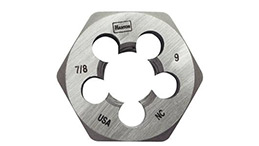
Sep . 24, 2024 23:18
Back to list
cyclone separator
Understanding Cyclone Separators Principles and Applications
Cyclone separators are versatile and efficient devices used in various industries for the separation of particles from gas or liquid streams. Leveraging centrifugal forces, these separators can effectively remove larger particulates, ensuring cleaner outputs and enhancing operational efficiency.
Working Principles
The basic operating principle of a cyclone separator revolves around the creation of a rotating airflow. When a mixture of gas or liquid containing solid particles enters the separator, it is directed into a cylindrical chamber, commonly at a tangential angle. This motion generates a vortex, causing the denser particles to be pushed outward towards the wall of the cyclone due to centrifugal force.
Once the particles reach the outer wall, they spiral downward in a conical section before exiting through the lower outlet, also known as the underflow. The cleaner gas or liquid then continues to the top of the cyclone and exits through the overflow outlet. The efficiency of a cyclone separator largely depends on factors such as the inlet velocity, particle size, and density, as well as the design of the cyclone itself.
Design Variants
Cyclone separators are available in various designs and sizes, tailored for specific applications. Common design variations include
1. Single-cyclone Separators These are basic units ideal for applications with lower particulate loads. 2. Multi-cyclone Separators These consist of multiple smaller cyclones operating in parallel, increasing efficiency for larger volumes of material. 3. Wet Cyclones In some cases, a liquid is introduced into the cyclone to enhance the collection of finer particles, effectively converting it into a scrubber.
The choice of design significantly impacts the performance and efficiency of the separation process.
cyclone separator

Applications Across Industries
Cyclone separators find applications in diverse sectors, making them essential in many industrial processes. Here are a few prominent applications
- Oil and Gas In the petroleum industry, cyclone separators are used to separate sand, water, and other contaminants from crude oil and natural gas, ensuring cleaner products and preventing equipment damage. - Mining In mineral processing, these separators help in the extraction of valuable minerals by separating ore particles from gangue material. - Food Processing Cyclones are also employed in the food industry for dust control and to remove foreign materials from grains and powders. - Waste Management In waste treatment facilities, cyclone separators aid in the removal of solids from wastewater, facilitating cleaner effluent discharges.
Advantages and Disadvantages
The popularity of cyclone separators stems from several advantages, including
- High Efficiency They can achieve significant particle separation levels, especially for larger particles. - Low Maintenance With no moving parts, cyclones are relatively easy to maintain compared to other separation technologies. - Cost-Effectiveness Their simple design and operation often translate into lower operational costs.
However, there are some disadvantages to consider. Cyclones are not as effective for fine particle separation and may require additional processes such as bag filters or electrostatic precipitators for complete filtration.
Conclusion
Cyclone separators play a crucial role in improving process efficiency and product quality across various industries. Their simple yet effective operation, combined with a range of designs, makes them a cornerstone technology for particulate separation. As industries continue to advance, cyclone separators will remain relevant, adapting to newer challenges and supporting sustainability goals through improved filtration techniques. Understanding their principles and applications is essential for anyone working in sectors that rely on effective separation technologies.
Latest news
-
Safety Valve Spring-Loaded Design Overpressure ProtectionNewsJul.25,2025
-
Precision Voltage Regulator AC5 Accuracy Grade PerformanceNewsJul.25,2025
-
Natural Gas Pressure Regulating Skid Industrial Pipeline ApplicationsNewsJul.25,2025
-
Natural Gas Filter Stainless Steel Mesh Element DesignNewsJul.25,2025
-
Gas Pressure Regulator Valve Direct-Acting Spring-Loaded DesignNewsJul.25,2025
-
Decompression Equipment Multi-Stage Heat Exchange System DesignNewsJul.25,2025

